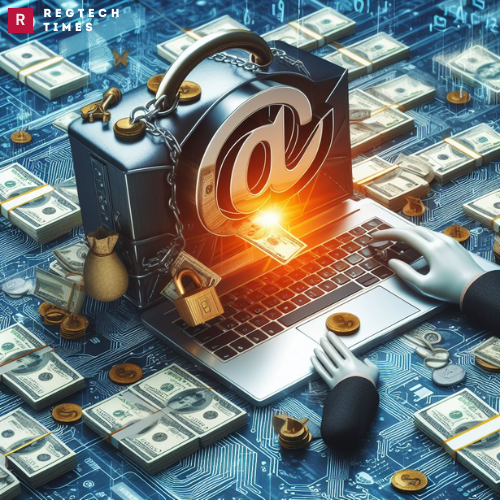In today’s interconnected world, where digital transactions reign supreme, the menace of cybercrime looms large. Among the myriad forms of illicit activities, email fraud has emerged as a particularly insidious threat, exploiting vulnerabilities in communication channels to defraud unsuspecting victims. The recent case of Brianna S. Graves, a resident of Kansas City, Missouri, offers a sobering glimpse into the complexities of such schemes and their far-reaching consequences.
The Email Fraud Scheme
The modus operandi of the email fraud scheme orchestrated by Graves was deceptively simple yet remarkably effective. It began with ETS Contracting, Inc., a reputable firm based in Brooklyn, New York, receiving an email purportedly from a trusted vendor. The fraudulent message, crafted with meticulous precision, instructed ETS to wire a substantial sum—$240,926—to a designated bank account. Unbeknownst to ETS, the email was a forgery, designed to mimic legitimate communication and lure the unwary into the trap set by cybercriminals.
The Trust Breach
Trusting the authenticity of the email, ETS complied with the instructions and initiated the transfer on December 18, 2022. However, unbeknownst to them, the funds were destined for the coffers of a criminal enterprise, with Brianna S. Graves at its helm. Graves, leveraging her control over a bank account registered under the guise of Heavy Weight Maintenance LLC, served as the linchpin of the fraudulent operation.
Misuse of Funds
Upon receiving the illicit funds, Graves wasted no time in laundering the money through a series of transactions aimed at obscuring its origins. A cashier’s check served as a conduit for funneling the funds into another bank account, facilitating Graves’s indulgence in a lavish lifestyle. Luxury car payments, exotic vacations, cruises, airfare, and even gambling became hallmarks of Graves’s brazen disregard for the law and the victims of her crimes.
Investigation
In June 2023, federal agents, aided by the diligent efforts of the FBI and the New York City Police Department, executed a warrant and seized a portion of the embezzled funds from Graves’s bank account. The seizure marked a crucial turning point in the investigation, unraveling the intricate web of deception woven by Graves and her accomplices.
Legal Consequences
Faced with irrefutable evidence, Graves opted to plead guilty to money laundering, acknowledging her culpability in the nefarious scheme. The plea agreement, finalized before U.S. District Judge Brian C. Wimes, mandated full restitution of the unlawfully obtained amount—$240,926—and forfeiture of the same sum to the government. Furthermore, Graves faces a maximum sentence of up to 10 years in federal prison, underscoring the gravity of her actions and the severity of the penalties imposed by the law.
The case of Brianna S. Graves serves as a cautionary tale, underscoring the perils of email fraud and the devastating impact it can have on businesses and individuals alike. Beyond the financial losses incurred, such schemes erode trust, undermine confidence in digital transactions, and tarnish the reputation of legitimate enterprises. As technology evolves and cybercriminals adapt their tactics, vigilance and robust security measures are imperative to safeguard against the ever-present threat of email fraud.
To combat this evolving threat, organizations must prioritize cybersecurity awareness training for employees, implement robust authentication protocols, and leverage advanced fraud detection mechanisms. Collaboration between law enforcement agencies, regulatory bodies, and private sector stakeholders is essential to dismantle criminal networks and hold perpetrators accountable for their actions. By remaining vigilant and proactive in our approach to cybersecurity, we can mitigate the risks posed by email fraud and safeguard the integrity of our digital ecosystem.


